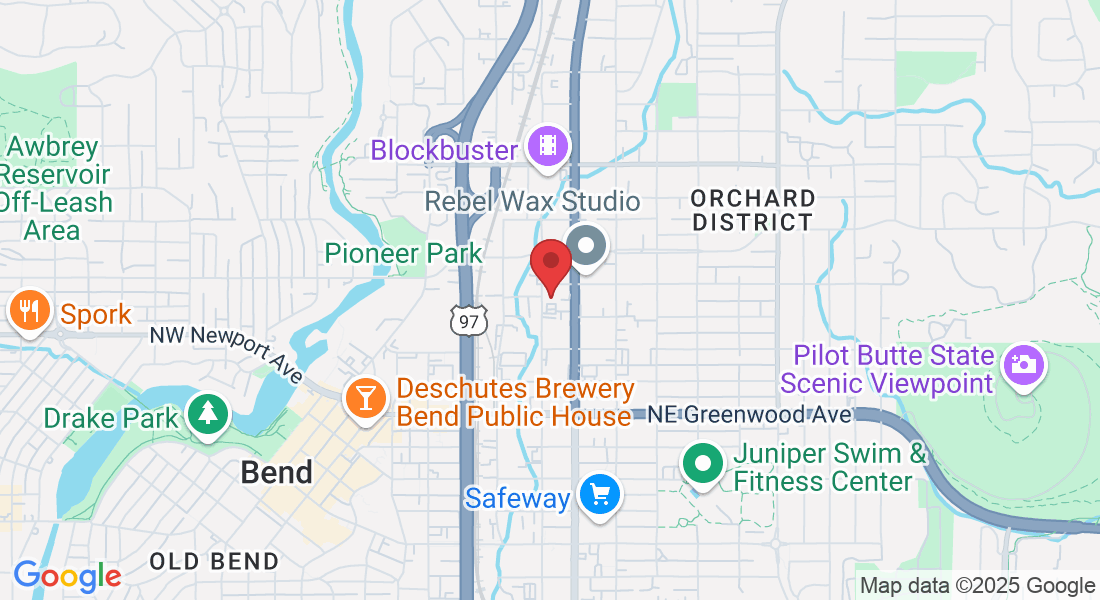TMJ Relief
Unlock Relief From TMJ Pain
If you're struggling with discomfort and dysfunction in your jaw, you've come to the right place. Temporomandibular joint (TMJ) disorders, or TMD, as they are also known, can severely impact the quality of your life, leading to significant jaw pain, headaches, and hindrances in performing simple tasks like opening and closing your mouth. By diving deeper into understanding the complexities of TMJ disorders, we're equipped to provide innovative and tailored physical therapy solutions for effective TMJ pain relief.
Experience TMJ Relief like Never Before with PhysioFit: We take a deeply personalized approach to your health, comprehending that every TMJ pain sufferer requires a unique treatment plan. Leveraging the power of evidence-based, fitness-driven physical therapy in bend, we strive to offer more than temporary relief. We aspire to improve your overall well-being, stave off persistent pain and accelorate your recovery process, allowing you to effortlessly resume your normal life.
What You Should Know
Healthcare providers classify TMDs into three categories:
Disorders of Your Jaw Joints: These involve complications in the jaw joints themselves, often manifesting as clicking, popping, or grating sounds during jaw movement.
Disorders of Your Chewing Muscles: This category includes issues related to the muscles responsible for chewing, where patients may experience persistent or intermittent muscle pain.
Headaches That Result From TMD: A significant fraction of TMD sufferers may experience headaches or migraines as a consequence of jaw joint or muscle dysfunction, significantly affecting their quality of life.
A proper diagnosis of a TMJ or TMD problem involves a thorough evaluation from a professional.
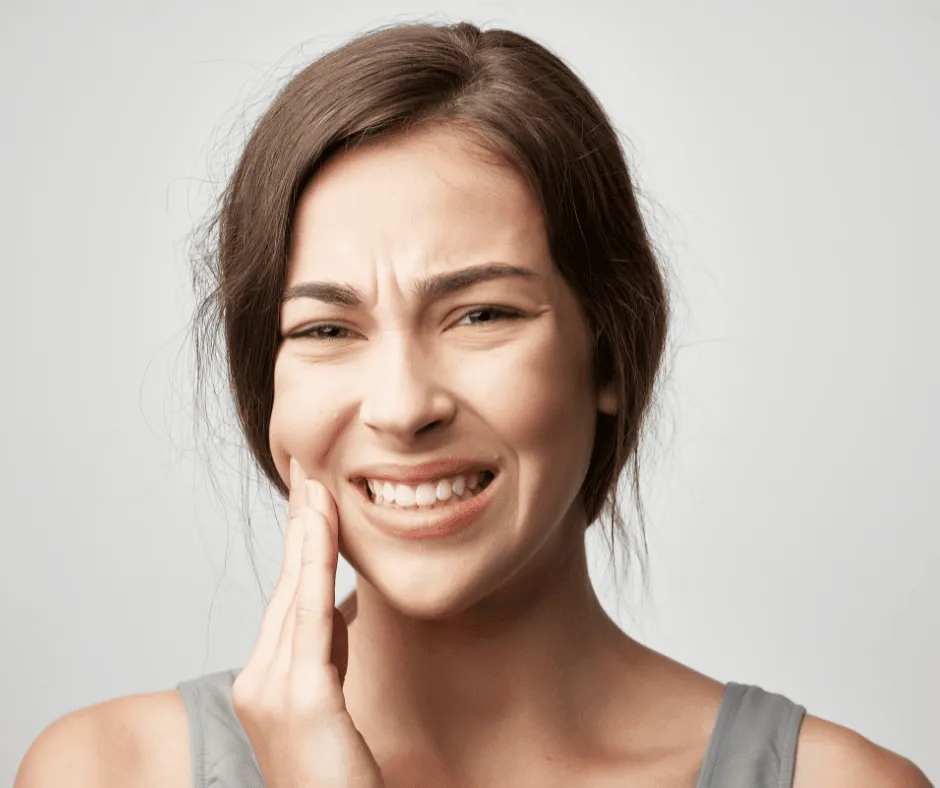
Some of The Most Common Causes of TMJ Pain
The onset of TMD isn't attributed to one solitary cause. Instead, it tends to emerge from a diverse array of factors, often in combination.
Jaw injury: Injuries such as a broken or dislocated jaw can directly affect the temporomandibular joint, leading to TMJ disorders. Such physical trauma can disrupt the alignment and smooth functioning of the jaw joint, inducing pain and discomfort.
Teeth Grinding or Clenching (bruxism): Frequent teeth grinding or clenching, often a subconscious habit during sleep or periods of stress, can exert excessive pressure on the TMJ, contributing to its dysfunction. Over time, this can lead to wear and tear, causing persistent pain and other TMJ-related symptoms.
Arthritis in Your Jaw Joint: Arthritis, an inflammatory condition, can affect any joint in your body, including the TMJ. The inflammation and degeneration associated with arthritis can cause joint pain and stiffness, impairing normal jaw movement.
Malocclusion: Malocclusion refers to the misalignment of teeth when the jaws are closed, which can put additional strain on the TMJ. This imbalance can force the jaw joint to work harder to achieve efficient biting and chewing, increasing the risk of TMJ disorders.
Stress: High levels of stress can lead to physical manifestations such as increased muscle tension or clenching of teeth, both of which can place undue strain on the TMJ. Chronic stress can exacerbate these physical responses, thereby contributing to TMJ pain and dysfunction over time.
If any of this information resonates with your current situation, we urge you to schedule an appointment with us immediately. Don't let hip pain diminish your life quality - allow us to help you embark on the path to relief today.
Can I Prevent TMD or TMJ Pain?
While it's true that certain risk factors contributing to TMJ dysfunction are beyond our control, there are still practical steps you can take to minimize the likelihood of developing this condition:
Make Use of a Mouth Guard During Sleep: Nighttime teeth clenching or grinding, known as bruxism, can significantly contribute to TMJ dysfunction. By wearing a mouth guard as you sleep, you can effectively mitigate this risk, protecting your jaw joints from undue pressure.
Ensure You're Protected in High-Risk Situations: When participating in contact sports, your facial area is more susceptible to injuries. Utilizing a mouth guard during such activities can offer invaluable protection for your jaw, reducing the risk of TMD.
Prioritize Maintaining Good Posture: The alignment of your neck and head plays a vital role in the functioning of your jaw. By ensuring good posture, you can maintain optimal alignment, thereby reducing strain on your TMJ.
Embrace Stress Reduction Practices: Stress can lead to unconscious habits such as jaw clenching, which can exacerbate or lead to TMD. Techniques such as meditation or mindfulness exercises can help manage your stress levels, offering indirect yet essential protection against TMJ dysfunction.

Common Symptoms of TMJ Pain
Jaw Tightening or Stiffness
Jaw Pain
Jaw Clicking or Popping
Trouble Closing or Opening Your Mouth.
Headaches or Migraines
Earaches or Toothaches
Ringing in Your Ears (tinnitus)
Teeth Fitting Together Differently (malocclusion)
Remember, if you resonate with any of the symptoms or conditions mentioned, we highly recommend making an appointment with us for a thorough evaluation and personalized treatment plan.
Please Note: The information provided on our website is intended for general education and is not a substitute for professional medical advice. Each individual's situation and body is different. Therefore, what may work for one person may not work for another. We care about your well-being and advise you to reach out to us to discuss your specific needs before implementing any advice from our website.
Your Source for All Things Physical Therapy in Bend Oregon
The PhysioBlog
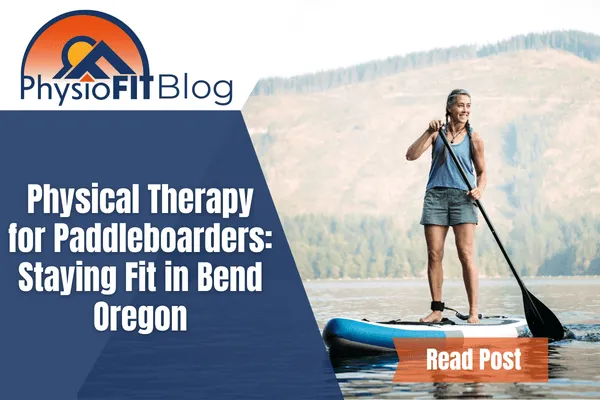
Physical Therapy for Paddleboarders: Staying Fit in Bend Oregon
Understanding Paddle Boarding and Physical Therapy
Please Note:The information provided on our website is intended for general education and is not a substitute for professional medical advice. Each individual's situation and body are different. Therefore, what may work for one person may not work for another. We care about your well-being and advise you to reach out to us to discuss your specific needs before implementing any advice from our website.
Introduction
Paddle boarding on the Deschutes River is a popular pastime for many outdoor enthusiasts. This activity not only offers an opportunity to enjoy the scenic beauty of the river but also provides a full-body workout. However, to fully enjoy this sport, it's crucial to stay fit and maintain good physical health. This is where physical therapy comes into play. Physical therapy plays a vital role in maintaining and improving fitness levels, making it an essential part of a paddle boarder's routine.
Paddleboarding is a sport that requires strength, balance, and endurance. It engages the entire body, from the core muscles used for balance to the arm and shoulder muscles used for paddling. As such, staying fit is crucial for paddleboarders. Regular exercise, proper nutrition, and adequate rest are all important aspects of fitness. However, one aspect that is often overlooked is the role of physical therapy.
Physical therapy, also known as physiotherapy, is a healthcare profession dedicated to improving and maintaining physical function and performance. It involves the use of various techniques, including exercises, manual therapy, and education, to treat and prevent injuries and improve physical abilities. For paddleboarders, physical therapy can help improve strength, flexibility, and balance, reduce the risk of injuries, and enhance performance.
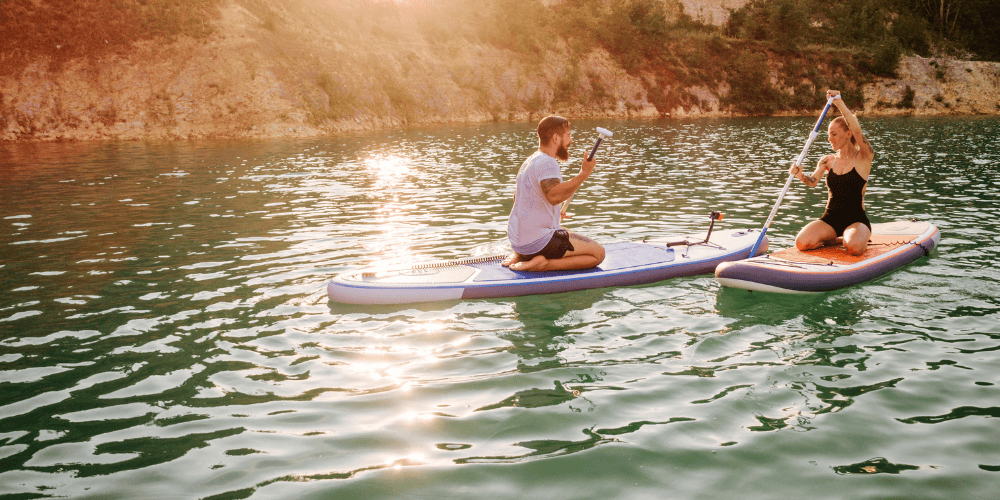
The Sport of Paddleboarding
Paddleboarding has a rich history and has gained significant popularity over the years. It's a versatile sport that can be enjoyed in various water bodies, from calm lakes to flowing rivers like the Deschutes. The health benefits of paddleboarding are numerous. It improves balance, strengthens the core, and provides a low-impact cardio workout. However, like any sport, paddleboarding comes with its share of physical challenges and potential injuries. Common issues include strains, sprains, and classic overuse injuries, particularly in the shoulders due to the repetitive paddling motion.
Paddleboarding is believed to have originated in Hawaii, where it was known as Hoe he'e nalu. It has since spread across the world and has become a popular sport and recreational activity. Today, paddleboarding is enjoyed by people of all ages and fitness levels. It's a great way to enjoy the outdoors, get a full-body workout, and have fun.
One of the main reasons for the popularity of paddleboarding is the health benefits it offers. Paddleboarding is a full-body workout that engages all the major muscle groups. It strengthens the core, improves balance, increases endurance, and provides a low-impact cardio workout. Moreover, being out on the water and in nature can also have positive effects on mental health, reducing stress and improving mood.
However, paddleboarding is not without its challenges. The sport requires a good level of physical fitness and can be physically demanding. Common injuries in paddleboarding include muscle strains and sprains, particularly in the shoulders, back, and knees. These injuries often result from overuse, poor technique, or inadequate physical conditioning.
The Role of Physical Therapy in Paddleboarding
Physical therapy can play a significant role in helping paddleboarders prevent and recover from these injuries. It involves the use of various techniques to improve strength, flexibility, and balance, and to promote healing and recovery.
Preventive physical therapy focuses on strengthening the body and improving technique to prevent injuries. This might involve exercises to strengthen the core and shoulder muscles, improve balance, and enhance paddling technique. For example, a physical therapist might recommend exercises that truly strengthen the core, rotator cuff for shoulder health, and balance exercises to keep you on your board.
Reactive physical therapy, on the other hand, involves treating existing injuries. This might involve manual therapy techniques to reduce pain and inflammation,exercises to promote healing and restore function, and education on modifying activity and technique to prevent re-injury.
Physical therapy can be a valuable resource for paddleboarders. By improving physical fitness and technique, and by treating and preventing injuries, physical therapy can help paddleboarders enjoy their sport safely and effectively.
Overuse Injuries in Paddleboarding
Overuse injuries are particularly common in paddleboarding. These injuries occur when a particular body part is subjected to repeated stress over time, leading to damage and inflammation. In paddleboarding, the shoulders are particularly at risk due to the repetitive motion of paddling.
Overuse injuries can result in pain, reduced mobility, and impaired performance. If left untreated, they can lead to more serious problems like chronic pain and disability. Therefore, it's important to address overuse injuries promptly and effectively.
Physical therapy can play a key role in the management of overuse injuries in paddleboarding. A physical therapist can provide treatments to reduce pain and inflammation, prescribe exercises to strengthen the affected area and restore function, and provide advice on modifying activity and technique to prevent re-injury.
For example, in the case of a shoulder overuse injury, a physical therapist might use manual therapy techniques like massage and mobilization to reduce pain and inflammation, prescribe exercises to strengthen the shoulder muscles and restore mobility, and provide advice on proper paddling technique to reduce stress on the shoulder.
For more detailed information on training for paddleboarding, you can refer to thiscomprehensive guide by REI Co-op. For a real-life experience of paddleboarding on the Deschutes River, check out thisarticle by Oregon Live.
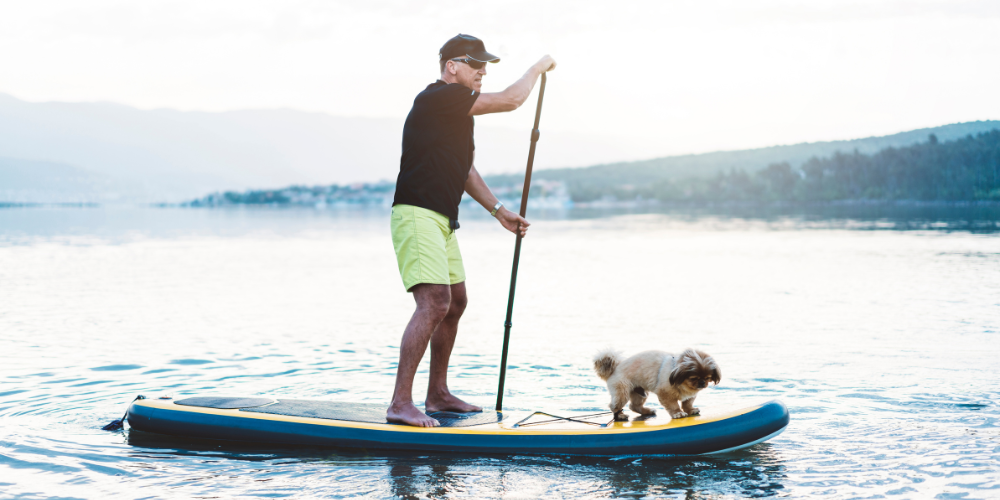
Physical Therapy Techniques for Paddleboarders
Physical therapy offers a range of techniques and exercises specifically designed to target the common problem areas for paddleboarders. These exercises focus on strengthening the core, improving balance, and enhancing the endurance of the upper body, particularly the shoulders.
Core strengthening exercises are crucial for paddleboarders as a strong core improves balance and stability on the board. Exercises, while not a comprehensive list, could include planks, bridges, and loaded carries.
Balance exercises are also important as they help paddleboarders maintain their stability on the board. These might include training on unsteady surfaces, heel-to-toe walk, as well as board specific exercises.
Upper body and shoulder strengthening exercises are vital due to the repetitive paddling motion in paddleboarding. These exercises can help prevent overuse injuries in the shoulders.
It's important to note that these exercises should be performed under the guidance of a qualified physical therapist in bend to ensure correct technique and prevent injuries. A physical therapist can provide a customized exercise program based on the individual's fitness level, goals, and any existing injuries or conditions. If you’d like to explore this more or would like to schedule a time with a physical therapist, contact us at PhysioFITBend.com
FAQs
What are the benefits of paddleboarding? Paddleboarding is a full-body workout that improves balance, strengthens the core, and provides a low-impact cardio workout. It also offers mental health benefits by reducing stress and improving mood.
How can physical therapy help paddleboarders? Physical therapy can help paddleboarders improve strength, flexibility, and balance, reduce the risk of injuries, and enhance performance. It can also aid in the recovery from injuries. Contact us at PhysioFITBend.com for help.
What are some common injuries in paddleboarding? The most common injuries in paddleboarding are muscle strains, sprains, and overuse injuries, particularly in the shoulders due to the repetitive paddling motion.
What is the difference between preventive and reactive physical therapy? Preventive physical therapy focuses on strengthening the body and improving technique to prevent injuries, while reactive physical therapy involves treating existing injuries.
What are some physical therapy exercises for paddleboarders? Physical therapy exercises for paddleboarders include core strengthening exercises like planks and bridges, balance exercises like standing on one leg, and upper body and shoulder strengthening exercises like rotator cuff exercises and shoulder press.
Conclusion
In conclusion, physical therapy plays a crucial role in paddleboarding, particularly for those who enjoy the sport in Bend, Oregon. It not only helps in preventing common injuries but also aids in improving overall performance. Whether you're a seasoned paddleboarder or a beginner, incorporating physical therapy into your fitness regimen can significantly enhance your paddleboarding experience. So, take the plunge and consider physical therapy as an integral part of your paddleboarding journey. It's an investment in your health that will pay off in the long run. Happy paddleboarding!
Please Note: It's important to note that any exercises that are shared should be performed under the guidance of a qualified physical therapist in bend to ensure correct technique and to prevent injuries. A physical therapist can provide a customized exercise program based on the individual's fitness level, goals, and any existing injuries or conditions. If you’d like to explore this more or would like to schedule a time with a physical therapist, contact us at PhysioFITBend.com
Copyright PhysioFIT 2025 . All rights reserved


